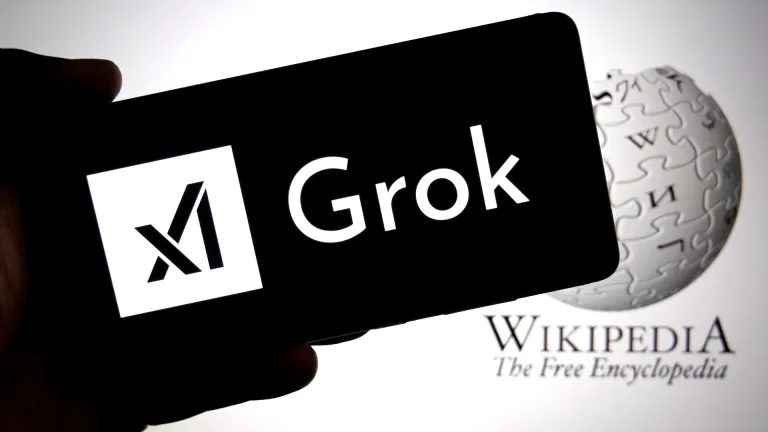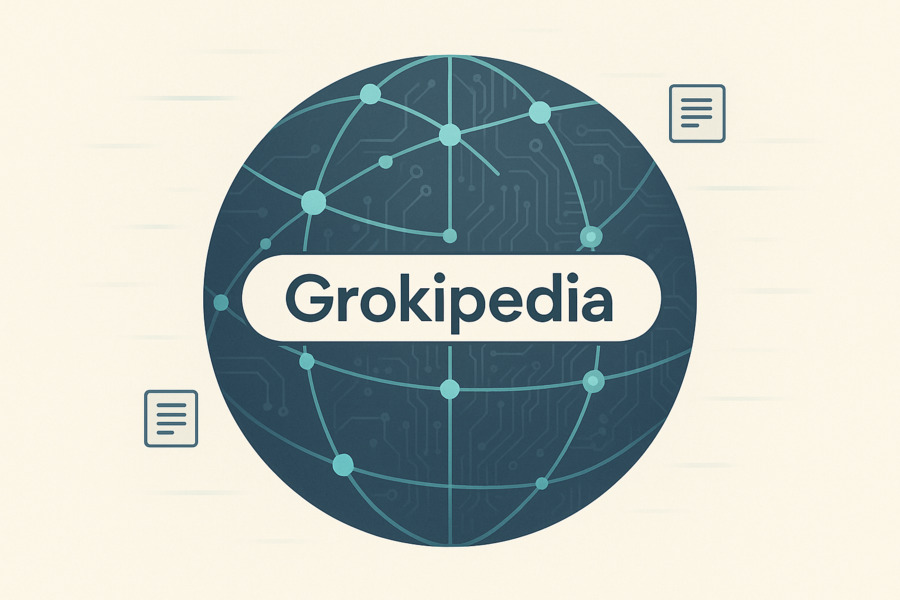In a move that could reshape the digital knowledge landscape, Elon Musk’s AI company xAI has officially launched Grokipedia, an AI-powered online encyclopedia positioned as a direct competitor to Wikipedia. The platform, which promises to deliver a “truth-first” approach to knowledge, leverages Musk’s Grok AI model and embraces a “free speech” philosophy that he claims addresses systemic biases in traditional knowledge platforms.
Announcing the launch on his social media platform X, Musk declared that Grokipedia.com is “now live,” stating its mission is to present “the truth, the whole truth and nothing but the truth.” This launch marks a significant development in ongoing debates about ideological neutrality in digital knowledge repositories, particularly as AI systems increasingly rely on such sources for training data.
What Is Grokipedia?
Grokipedia represents a fundamental shift in how online encyclopedias are constructed. While maintaining the basic structure of a traditional knowledge repository, it diverges from the Wikipedia model in two critical aspects:
Free Speech Philosophy: Musk has been a vocal critic of Wikipedia, previously accusing it of being controlled by “systematic propaganda” and exhibiting what he describes as “woke bias” . Grokipedia’s design is rooted in the free speech principles that guide Musk’s X platform, theoretically resulting in fewer ideological constraints and a broader range of source material. Critics, however, warn this approach might introduce different forms of bias rather than eliminating it altogether.
Deep AI Integration: Unlike Wikipedia’s human-edited model, Grokipedia is powered by xAI’s conversational Grok model, giving it dynamic, real-time capabilities . The platform functions as a living dataset that continuously updates, positioning itself not merely as an encyclopedia but as a potential source of truth for AI systems, search engines, and public understanding of global topics.
These foundational differences position Grokipedia as a high-speed, algorithmically-driven information source aimed at disrupting the human-edited, consensus-based model that has dominated online encyclopedias for decades.
Key Features of Grokipedia

The initial release of Grokipedia (v0.1) launched with approximately 885,000 articles, significantly fewer than Wikipedia’s collection of over 7 million articles . Despite this smaller scale, it introduces several innovative features:
- AI-Generated Content: The platform’s entries are primarily drafted and maintained by the Grok language model rather than human editors . This AI-driven approach aims for neutral and objective tone through carefully engineered backend processes that shape the final output.
- Conversational Interface: Users can interact with Grokipedia as they would with a research partner, using natural language queries for advanced functions. The system supports commands like “Summarize,” “Compare to last year,” and “Cite sources only from primary docs,” with the ability to maintain context through multi-step conversations.
- Fact-Checking System: Each entry includes inline citations that users can click to view linked sources . The platform notes a “Fact-checked by Grok” timestamp on many articles, representing a core element of its editorial model. The AI performs fact-checking, bias detection, and logical consistency evaluation.
- Real-Time Updates: For rapidly evolving fields like technology and finance, Grokipedia offers near real-time updates by connecting to live data streams from X and other internet sources . This provides a significant speed advantage over Wikipedia’s more deliberate update process.
- Limited User Participation: Unlike Wikipedia’s open editing model, Grokipedia restricts direct user contributions. Visitors cannot immediately edit content but can report errors or suggest modifications through feedback mechanisms.
Use Cases of Grokipedia
Grokipedia positions itself as a high-utility research tool for various user segments:
Students and Researchers can leverage the platform to accelerate early-stage research on complex topics. The system provides quick overviews with direct links to academic papers and benchmarks, potentially reducing initial research time significantly.
Journalists and Media Professionals may find value during breaking news situations, where the platform can generate time-stamped summaries with links to original posts and press releases, though verification of primary sources remains essential.
Businesses and Teams can utilize Grokipedia for generating rapid internal briefs on technical subjects, regulatory changes, or competitive landscapes, allowing specialized teams to focus on deeper analysis rather than preliminary research.
Everyday Users benefit from synthesized overviews on topics of personal interest, from consumer electronics specifications to current events, delivered in an accessible, conversational format.
How Grokipedia Compares to Wikipedia

The distinction between these two platforms represents a fundamental philosophical divide in knowledge management:
- Core Model: Grokipedia relies on AI-generated content synthesized by the Grok language model, while Wikipedia depends on human-edited content governed by community consensus .
- Update Speed: Grokipedia offers near real-time updates through its connection to live data streams, whereas Wikipedia’s updates depend on human editors and community verification processes .
- Transparency: Wikipedia maintains full revision histories and public discussion pages, creating an auditable record of editorial decisions. Grokipedia operates with less transparency, as users cannot see why the AI prioritized certain sources or made specific editorial choices .
- Content Control: Wikipedia allows direct editing by registered users, while Grokipedia restricts users to submitting corrections that the AI then evaluates for implementation.
- Bias Management: Wikipedia relies on community moderation and strict Neutral Point of View policies, while Grokipedia utilizes algorithmic sourcing and fact-checking to manage bias.
Final Verdict on Grokipedia
Grokipedia presents a formidable, AI-driven challenge to Wikipedia’s human-edited model. Its strengths are clear: a conversational interface, real-time updates, and superior speed for professionals in fast-moving fields. However, its viability hinges on overcoming significant transparency and trust issues.
Until Grokipedia demonstrates robust, verifiable fact-checking and greater transparency in its sourcing and editorial decisions, it should be viewed as a powerful supplemental research tool rather than a replacement for traditional encyclopedias. Its ultimate success will depend on whether users can trust an algorithm with the complex task of curating neutral knowledge.
Read More: xAI Launches Imagine v0.9



